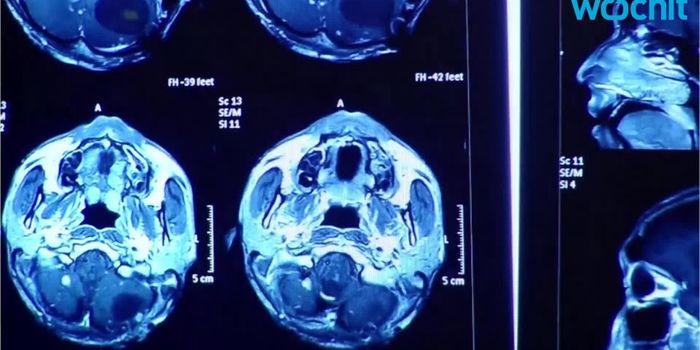Hypnosis
Hypnosis: a state of human consciousness involving focused attention and reduced peripheral awareness and an enhanced capacity to respond to suggestion. Theories explaining what occurs during hypnosis fall into two groups. Altered state theories see hypnosis as an altered state of mind or trance, marked by a level of awareness different from the ordinary conscious state. In contrast, nonstate theories see hypnosis as a form of imaginative role enactment. During hypnosis, a person is said to have heightened focus and concentration. The person can concentrate intensely on a specific thought or memory, while blocking out sources of distraction.
What's Popular in Hypnosis
-
JAN 05, 2022TechnologyDigital therapeutics (DTx) continue to rise in prevalence and scientific efficacy. While technology is nothing new in he ...Written By: Ryan VingumMAY 23, 2018Health & MedicineExercise is good for the body and good for the mind as well. Numerous studies show how different forms of physical activ ...Written By: Brenda Kelley KimMAY 23, 2018NeuroscienceA mantra can be defined as a statement or a slogan that is frequently repeated, but in the Hindu religion, mantras are l ...Written By: Brenda Kelley KimNOV 13, 2016VideosSkeptics tend to regard hypnosis as deceptive magic acts. At its worst, hypnosis may be entirely staged with apparent "v ...AUG 09, 2016VideosFor a long time, the practice of hypnotism has been thought to be a ruse, and nothing more than a fake act. The idea tha ...Written By: Anthony Bouchard
JAN 05, 2022
Technology
Digital therapeutics (DTx) continue to rise in prevalence and scientific efficacy. While technology is nothing new in he
...
Written By:
Ryan Vingum
MAY 23, 2018
Health & Medicine
Exercise is good for the body and good for the mind as well. Numerous studies show how different forms of physical activ
...
Written By:
Brenda Kelley Kim
MAY 23, 2018
Neuroscience
A mantra can be defined as a statement or a slogan that is frequently repeated, but in the Hindu religion, mantras are l
...
Written By:
Brenda Kelley Kim
NOV 13, 2016
Videos
Skeptics tend to regard hypnosis as deceptive magic acts. At its worst, hypnosis may be entirely staged with apparent "v
...
AUG 09, 2016
Videos
For a long time, the practice of hypnotism has been thought to be a ruse, and nothing more than a fake act. The idea tha
...
Written By:
Anthony Bouchard
AUG 02, 2016
Videos
Skeptics tend to regard hypnosis as deceptive magic acts. At its worst, hypnosis may be entirely staged with apparent "v
...
JUL 09, 2016
Plants & Animals
Studying baby sea turtles isn’t exactly easy, especially when you want to measure their weight. They
...
Written By:
Anthony Bouchard
MAY 05, 2016
Videos
Despite the societal reputation that hypnosis is a form of mind-control, scientists describe hypnotism as a state of con
...
Written By:
Kathryn DeMuth Sullivan
NOV 21, 2015
Videos
Hypnosis is something that people typically attribute to mind control. This is what television has put into our minds fo
...
Written By:
Anthony Bouchard
-
How does a low-level sensory representation rise into conscious awareness? What determines whether higher-order cortical areas have access to the representational content in sensory regions?...
Some of the most significant hurdles faced by neuroscientists in the field of neurodegenerative disease research when seeking to acquire genetic information include sample accessibility, repr...
Speaker:
Kelly Miller, PhD
Using Hebbian as well as homeostatic models of brain plasticity, the effects of neurofeedback (NFB) are examined from the theoretical perspective of EEG normalization. Within this framework,...
Clathrin mediated endocytosis (CME) at pre-synaptic terminals is functionally coupled to neuro-transmitter release. Like other cytosolic proteins, clathrin is synthesized in cell-bodies and c...
Since its initial description more than 70 years ago, autism spectrum disorder (ASD) has been diagnosed more frequently in boys. However, we remain unsure of why males are affected in greater...
How does a low-level sensory representation rise into conscious awareness? What determines whether higher-order cortical areas have access to the representational content in sensory regions?...
Some of the most significant hurdles faced by neuroscientists in the field of neurodegenerative disease research when seeking to acquire genetic information include sample accessibility, repr...
Speaker:
Kelly Miller, PhD
Using Hebbian as well as homeostatic models of brain plasticity, the effects of neurofeedback (NFB) are examined from the theoretical perspective of EEG normalization. Within this framework,...
Clathrin mediated endocytosis (CME) at pre-synaptic terminals is functionally coupled to neuro-transmitter release. Like other cytosolic proteins, clathrin is synthesized in cell-bodies and c...
Since its initial description more than 70 years ago, autism spectrum disorder (ASD) has been diagnosed more frequently in boys. However, we remain unsure of why males are affected in greater...


















